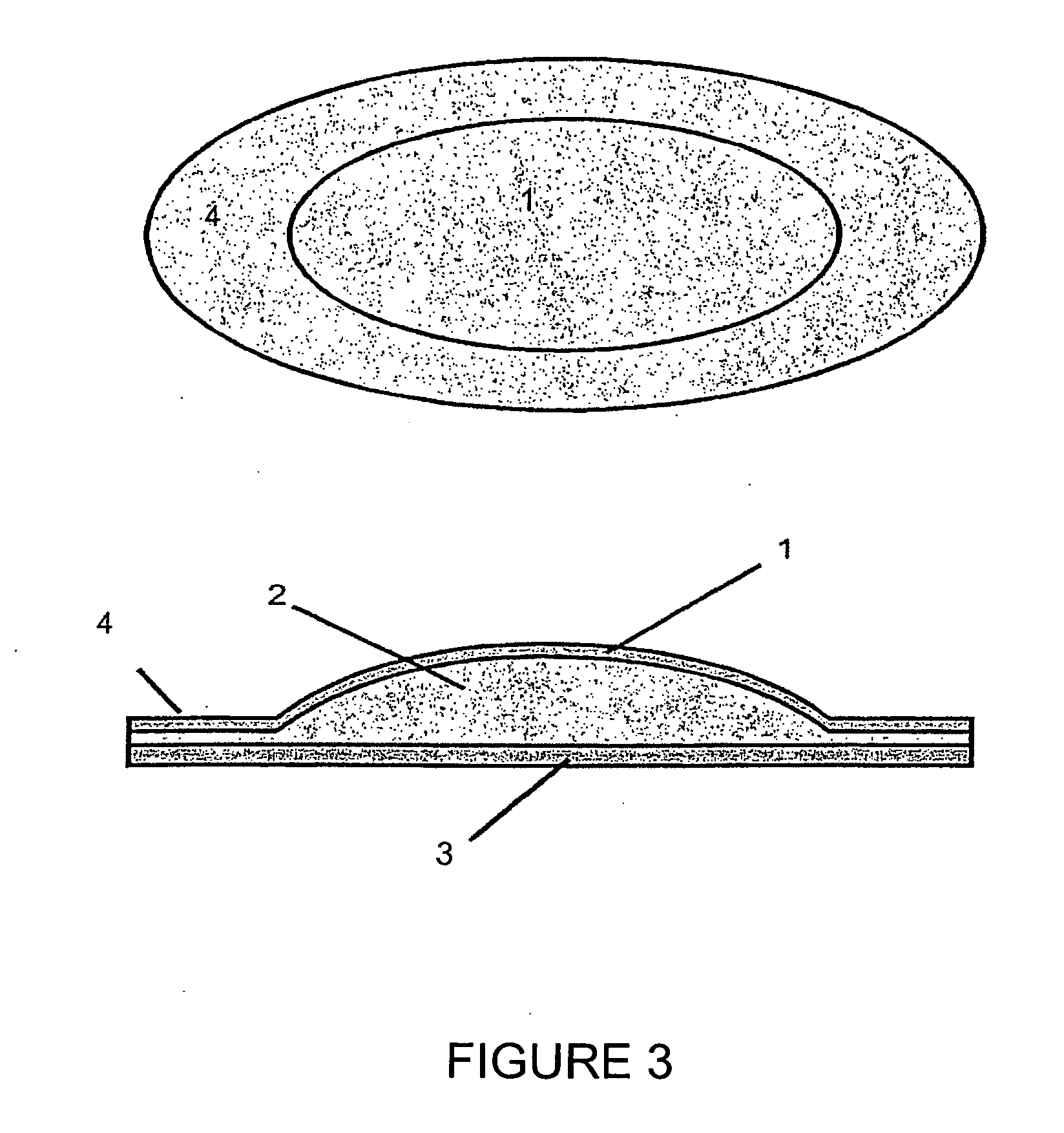Scar-reducing plaster
a scar-reducing plaster and plaster technology, applied in the field of scar-reducing plasters, can solve the problems of unsuitable cross-linked polymer gels, hypotrophic, atrophic or hypertrophic scars, and unsuitable processes, etc., to reduce the tendency to peel off, reduce the effect of scar reduction, and long wear duration
- Summary
- Abstract
- Description
- Claims
- Application Information
AI Technical Summary
Benefits of technology
Problems solved by technology
Method used
Image
Examples
Embodiment Construction
[0033] The backing film, as is known from the prior art, consists of an air- and water vapor-pervious but water-impervious polymer layer having a thickness of about 10 to 100 μm. The optionally flexible backing film preferably consists of polymers from polyurethane, polyethylene (PE), polypropylene (PP), polyamide, polyester or polyether-ester.
[0034] Xerogels are gels which have lost their fluidity through various forms of treatment, evaporation, aspiration, etc. and characterize a limiting state to solids. The polyurethane xerogels used are therefore to be regarded in particular as anhydrous.
[0035] DE 196 18 825 relates to suitable polyurethane xerogels as matrix and discloses hydrophilic, self-adhesive polyurethane gels which consist of [0036] a) polyetherpolyols having 2 to 6 hydroxyl groups and OH numbers of from 20 to 112 and an ethylene oxide (EO) content of ≧10% by weight, [0037] b) antioxidants, [0038] c) bismuth(III) carboxylates based on carboxylic acids having 2 to 18 C...
PUM
| Property | Measurement | Unit |
|---|---|---|
| thickness | aaaaa | aaaaa |
| thickness | aaaaa | aaaaa |
| thickness | aaaaa | aaaaa |
Abstract
Description
Claims
Application Information
 Login to View More
Login to View More - R&D
- Intellectual Property
- Life Sciences
- Materials
- Tech Scout
- Unparalleled Data Quality
- Higher Quality Content
- 60% Fewer Hallucinations
Browse by: Latest US Patents, China's latest patents, Technical Efficacy Thesaurus, Application Domain, Technology Topic, Popular Technical Reports.
© 2025 PatSnap. All rights reserved.Legal|Privacy policy|Modern Slavery Act Transparency Statement|Sitemap|About US| Contact US: help@patsnap.com



